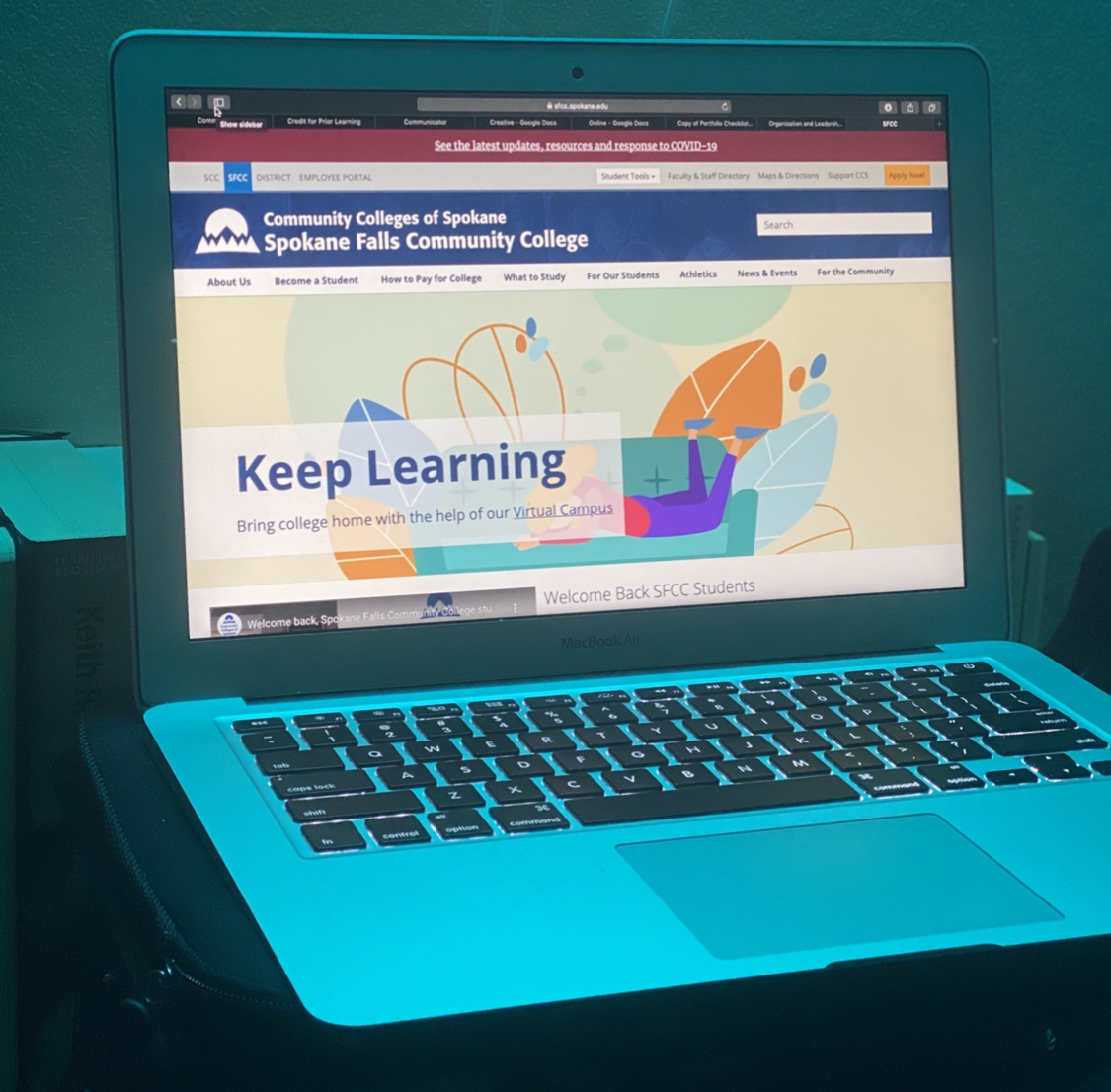Megan Jones remembers the passion of performing. After all, it’s hard to forget the moment where you get to bring your dreams to life, which is exactly what the Spokane Falls Community College freshman did when she acted in her theater class’ production of “Fire Melt Stone.”
But, after just the first week of planned performances, the Spartan Theatre took to silence, along with the rest of SFCC and college campuses across the world, when the coronavirus consumed and transformed normalcy into a distant memory.
“There’s much more to life than drama, but because it’s my favorite thing, that’s what I want to do, and it’s just very frustrating that we don’t know when it’s going to come back,” Jones said.
And months into quarantine, that idea of coming back still remains as undecided as unknown, while students at SFCC are grappling with the shift to exclusively online learning.
“For me personally, I wasn’t too intimidated by” online classes, said freshman Xander San Agustin, who’s pursuing a direct transfer agreement associate’s degree.
“I’ve taken them before, so it wasn’t too bad for me,” said San Agustin, who admitted, “I wasn’t expecting it to be the entire quarter.”
Out of the sudden shift to completely digital courses, it’s easy to imagine the worst-case scenario of an academic institution being overwhelmed by the new modality at the cost of student engagement. But this hasn’t been the case at SFCC, says college president Dr. Kimberlee Messina, who’s held the position since June 2019.
“At the Falls, we have truly excellent online instruction and we have some of the best success rates in the country. They’re comparable to our face-to-face rates, which is very unusual,” Messina said. “We developed really comprehensive support services for students so that they’re getting the counseling and financial aid and other support online.”
Still, Messina acknowledges the hardships for learners who either didn’t want to take online courses or had families to focus on during the pandemic, as enrollment declined by 12% for the spring quarter.
Even at that, the school took measures to accommodate students who decided against digital learning while also benefiting those who remained enrolled.
“I think if they felt that online wasn’t the option for them, then we made it very easy and extended timelines for them to drop and get their refunds. I think the education that they’re getting is high quality.”
Among the services included in that education are access to the school’s food bank, laptops, financial aid and mental health resources, all boosted by nearly $900,000 of funding between the Federal Cares Act and emergency aid, according to Messina.
Even with the resources and the previous quarter’s 24% rate of digital enrollment in the fall, it’s hard for some students to not miss the human side of education.
“It’s kind of ironic to have a communication class with no communication with other people. Some classes definitely just work better in person,” San Agustin said.
“I feel like some of these professors who are used to doing things their old-school kind of way have a harder time moving to this only online class. It feels like there’s not really a teacher, like you’re kind of just on your own for some of the classes.”

